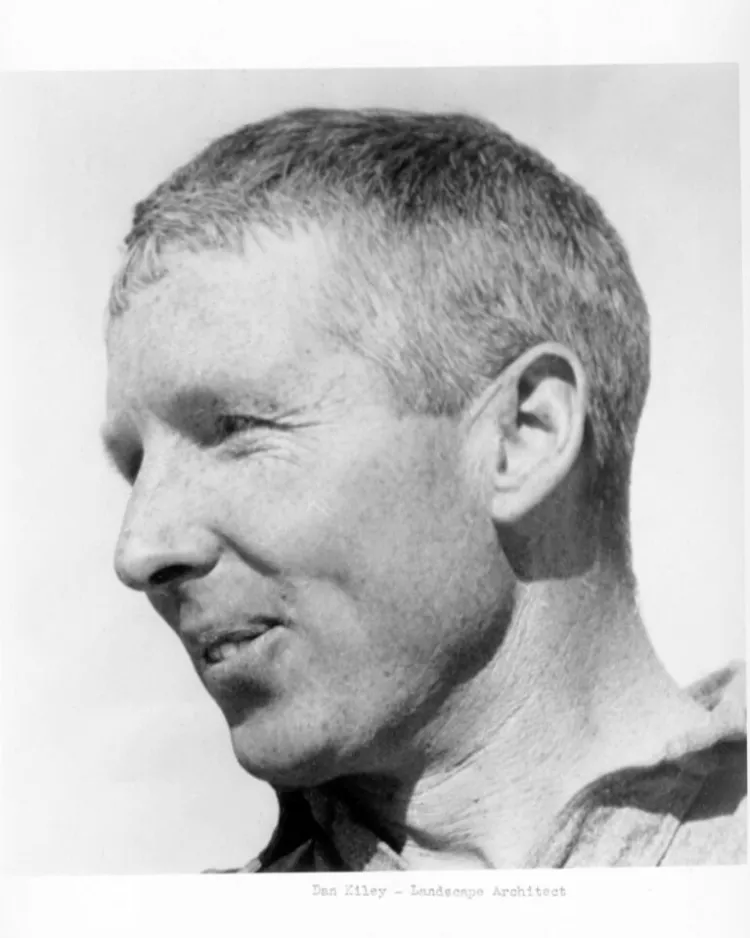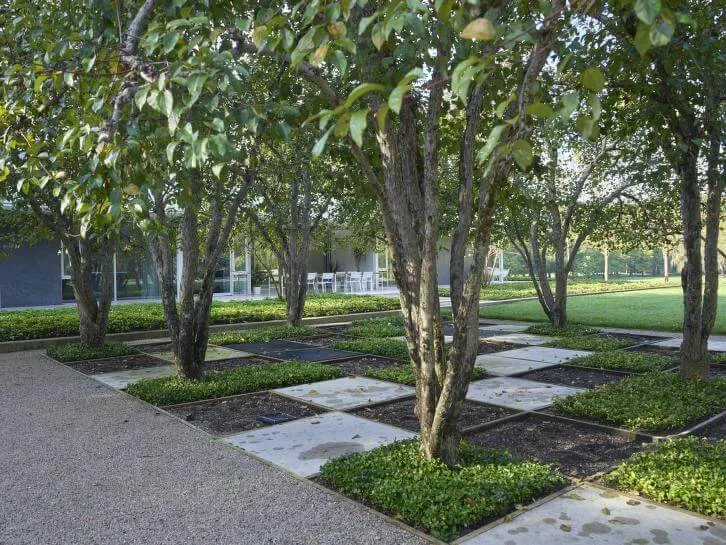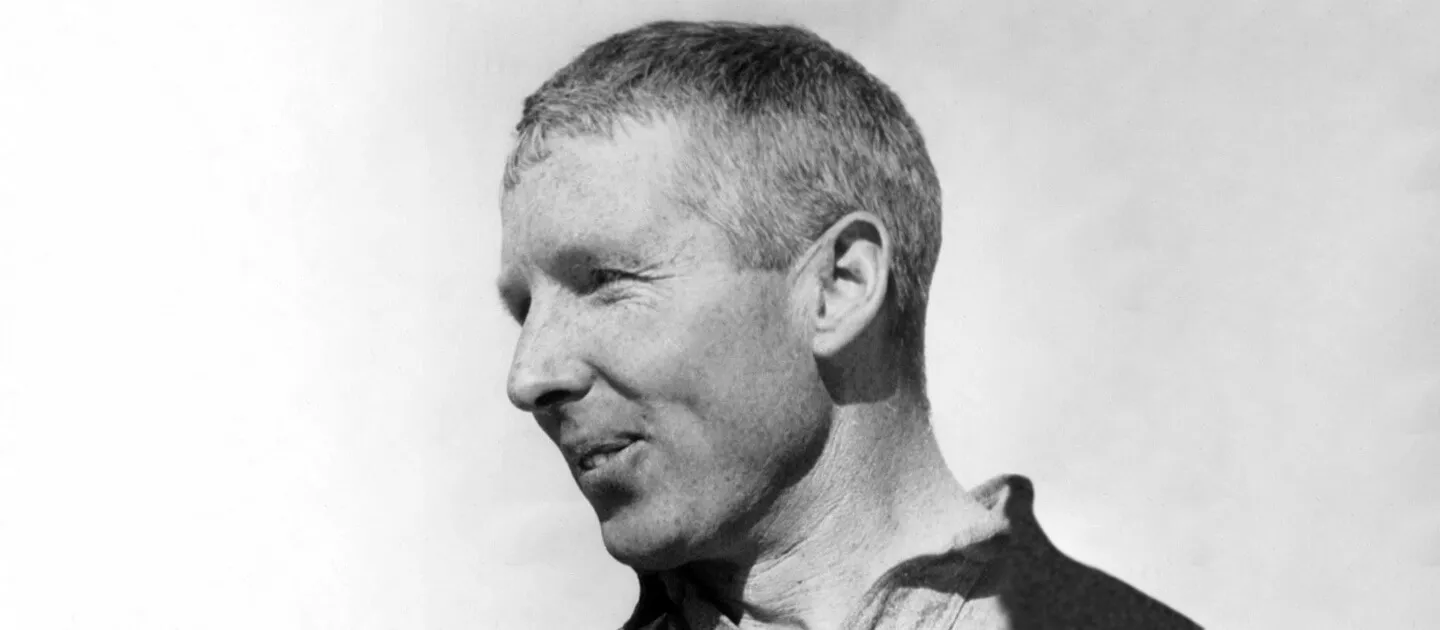Dan Urban Kiley (1912–2004), who lived and worked in Charlotte, Vermont, is recognized as one of the most influential figures in modern landscape architecture. He was best known for his disciplined, formalist designs that combined classical order with modernist clarity.
Kiley was born in Boston in 1912. He began his career as an apprentice to Warren H. Manning, an associate of Frederick Law Olmsted, the father of American landscape architecture. From 1936 to 1938 he studied at Harvard’s landscape architecture program but left before completing his degree, rejecting the Beaux-Arts curriculum in favor of a modernist approach that emphasized clarity, geometry, and contemporary design.
During World War II, Kiley served in the U.S. Army in Europe. His design skills led him to the presentation branch of the Office of Strategic Services, the precursor to the CIA, where he eventually became director of the design staff. Following the war, he was commissioned to design the courtroom for the Nuremberg war crimes trials.

Time in Europe left a deep impression on him, particularly the formal gardens of the Palace of Versailles in France created by André Le Nôtre. Le Nôtre’s use of geometric grids, axial alignments, tree-lined allées, and expansive tapis verts inspired Kiley to reinterpret these classical principles for modern landscapes.
After the war, Kiley established his practice, first in New Hampshire and then in Vermont. At his East Farm home-studio in Charlotte, he produced more than a thousand projects worldwide, often in collaboration with renowned architects such as I. M. Pei, Louis Kahn, and Eero Saarinen.
Some of his most celebrated works include the grounds of the Gateway Arch in St. Louis, the East Building of the National Gallery of Art in Washington, D.C., Lincoln Center in New York City, and the South Garden at the Art Institute of Chicago. Each illustrates his hallmark style of simple, geometric landscapes shaped with a restrained palette of grass, gravel, concrete, and carefully massed plantings. Kiley also used water as a design element with fountains and reflecting pools to integrate seamlessly with architecture.
In Vermont, Kiley consulted for Middlebury College and the University of Vermont. He designed the landscapes of the Currier Farm in Danby, the Twin Farms Resort in Barnard and the Cathedral of the Immaculate Conception in Burlington. The cathedral complex, with its distinctive grid of trees and contemplative outdoor space, stood as one of Vermont’s most important modernist landscapes until its demolition in 2025—an event that underscored the fragility of living landscapes when neglected.

A devastating fire at Kiley’s East Farm home destroyed many of his original drawings and slides, creating a significant gap in the record of his design process. Fortunately, a substantial archive of plans and drawings survives at Harvard University’s Graduate School of Design.
Kiley’s contributions earned him widespread recognition. He was elected to the National Academy of Design in 1963, received the Thomas Jefferson Medal in Architecture in 1987, was elected to the American Academy of Arts and Letters in 1996, and was awarded the National Medal of Arts in 1997. In 2002, he received the National Design Award for Lifetime Achievement.
Kiley died at East Farm in 2004. His legacy endures in both Vermont’s landscapes and in civic spaces around the world. At its core, his philosophy was simple yet profound--geometry should clarify, not dominate, and plant masses, water, and light should define a place. His landscapes remain an inspiration for designers and a source of quiet, enduring beauty for all who experience them.
